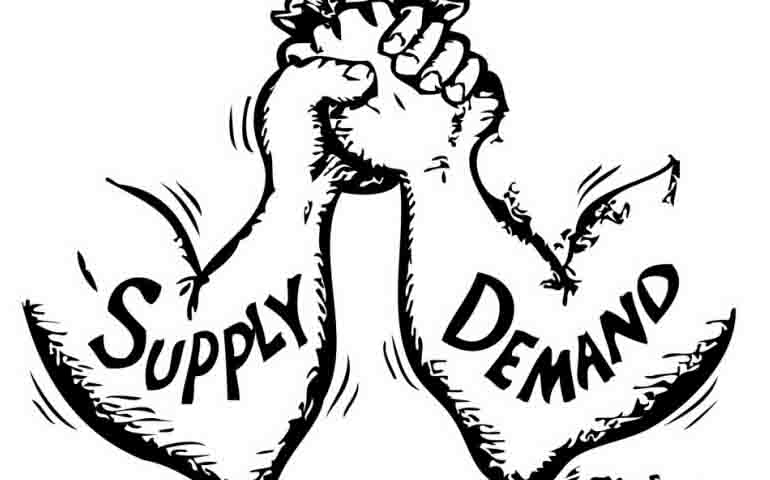

reviews
2021-04-27 18:59:50
Whereas demand refers to the consumer, supply refers to the firm or the producer which makes them two perspectives on one whole process. The key to understanding this concept is to be aware of the importance of the profit motive and also the importance of costs. The general definition of market supply in economics specifies that it is quantity (otherwise known as volume) of a good or service the producer is willing and able to supply onto a market at a certain price in a certain time. The supply price is the minimal price a seller would be willing to sell their product; otherwise, the production would be cost prohibitive.
The law of supply in economics says there is a direct connection between the price and the quantity supplied. How do you explain this? In order to answer this question and justify the law, we could mention two key points: 1. when the price of a product goes up, producers become more interested in maximizing the profits. When the price increases for milk, it is going to result in an increase of the quantity of milk produce. That is because an increase in the price of milk gives an incentive to dairy farmers to produce more because they want to make more profit. Moreover, entrepreneurs from other industries are going to rush into the industry where the price increase takes place trying to withdraw their capital from a less profitable enterprise. Thus, the supply increase is also caused by new emerging enterprises. 2. Growth in supply is related to the price due to the fact that every additional unit of commodity usually requires additional expenses. Therefore, any extra produce is not going to be made unless the price rises. Expansion in the production is going to last as long as added materials do not exceed the profit which came from the production of that item. A change in price only affects quantity supplied and moves along the market supply curve. A change in something else, one of the five shifters will cause the actual supply curve to change.
Similar to demand, market supply can be elastic and inelastic. Price elasticity of supply is the degree of responsiveness of the supply volume (size) to price changes for a good or service. A high PES makes the company more competitive than its opponents and it allows the company to make more revenue and profits. First of all, it is vital to consider the time because supply changes can take a long time to be implemented. In this regard, we can analyze PES from the perspective of three time periods: short-term, medium-term and long-term. Coefficient of price elasticity is calculated according to the formula:
PES = %change in quantity supplied / %change in price
It should be mentioned that inelastic supply is a more favorable situation for a seller because it guarantees the stability of production in case there is a sharp price change. Therefore, they seek to become monopolies in producing that item and artificially limit the volume of output and thus, limit the amount of supply. Elasticity of market supply depends on how difficult it is going to be conduct reallocation of resources between alternative industries where they are going to be used. In turn, resources mobility depends on the amount of time producers have for adapting to new price change. The more time the manufacturers have to react, the bigger the appropriate changes in the industry are going to take place. How companies react to changes in market conditions, namely price, is a significant concern for the company itself and to realizing how markets and economics work. The crucial concerns are:
TAG:
Views: 519

I have been trading Forex for more than 5 years, mostly with manual and automatic trading. I set up advisors for round-the-clock automated trading. I'm sure I can help to establish your trading skills....
Comments ()